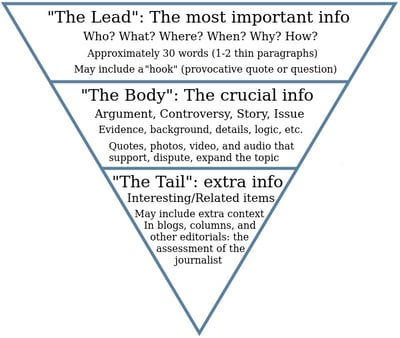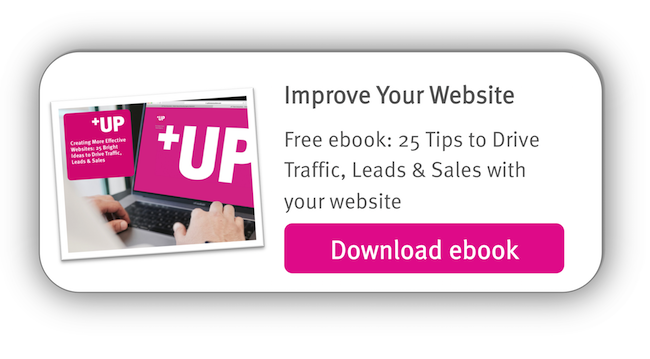Web content is scanned, not read. Follow these effective SEO content writing tips to be able to rank high in SERPs and provide value to your web readers.

Whether you have been an author, journalist, writer or web editor for many years - when it comes to writing content for the web, it's different than other types of writing. Why? Well, because web readers prefer to skim the text instead of reading it. If they don’t find what they are looking for, they will quickly exit from your website.
Capturing readers' attention in this fast-paced digital world can be immensely challenging. Humans are always on the go. The latest research has shown that the average human attention span has fallen to just eight seconds.
People are not giving you 30 seconds for an elevator pitch anymore. You only have eight seconds before a person starts thinking of a cute cat video to drown you out.
When you have this little time, it is important to create content that stands out from the crowd. You do this by creating well-written content that’s optimized to have your page rank high for search engines. And it must able to hold your readers’ attention long enough to have them see what you have to offer.
Creating this type of SEO content to improve your content marketing is possible with these following tips:
1. Know your audience
I see it in many of the website content created for small businesses, the web editors just begin typing without thinking about who they are trying to reach. Before creating any web content, you should ask the question - who is my buyer persona that I am trying to inform?
When readers search for a keyword in any search engine, they expect the results to give them the appropriate information that they searched for. If they click to go to your website and your web content does not solve their problem, then your competitor can provide the solution that they need.
2. Use the inverted pyramid style of writing
If you have eight seconds to grab the attention of your readers, it is imperative to be able to allow your reader to understand and evaluate your message quickly. A g reat writing style to structure your content to grab your readers’ attention is by using the inverted pyramid.
The inverted pyramid is structured with three main parts beginning with:
- The top part that contains the most important information
- The middle part that contains specific content
- It ends with supplemental information

Image of inverted pyramid by Wikimedia Commons
For example, say that you are hosting a conference. The top part would contain the most important details of the conference such as a description of the conference, the date, and the location. Specific content such as the speakers and topics will be in the middle. The supplemental information such as the organizers and the history of the event would go last.
3. Make text scannable
How often have you read word-for-word all the content on a website that you have been to? The percentage is probably very low because readers do not read web content, they scan it.
You can make your web content scannable by:
- Highlighting keywords
- Using sub-headers that summarize your key points
- Using bullet points to reduce wordiness
- Placing sales messages in your image captions
Your readers are looking for a solution to their problem. Ensure that they can find it quickly by easily scanning your web page.
4. Stick to active voice
You are receiving web traffic because visitors are coming to you to know more about your products or services. This means they are looking for you to be the expert. U se an active, direct voice instead of a passive one to get visitors to take action.
For example, rather than writing "I hope you find our lawn mowers fit your needs," say "10,000 customers choose us each month to solve their lawn mowing needs." Or writing "Feel free to contact us if you can't find the product that you looking for," say "Contact us and our experts will find the product that best suits you."
5. Use a reader-friendly format and writing
Did you know that the average reader reads at a 9th grade level? Thanks to the Flesch-Kincaid readability test there are plenty of t ools to help make sure your web content is understood and formatted for a 15 year old.
Nix the scholarly jargon and research paper format and language to stick with:
- Using short paragraphs that are two to three sentences
- Addressing your readers directly by using the word 'you'
- Skipping unnecessary words that only you or a technically person would understand
- Using bullet points to organize content into labeled tabs
- Using white space to provide content legibility
- Focusing on one topic per paragraph
6. Expect people to arrive anywhere on your website
Web visitors can land on any page on your website, which means that every page needs to be optimized. If the first page a visitor sees is one of your products or services, then that web page should be able to:
- Clarify where the visitor is at
- Have a call-to-action button telling the visitor where to go to next
- Have some supplemental information about your website
7. Incorporate multimedia to complement your content
A picture, video, chart or infographic can truly be worth a thousand words. People are more stimulated by visual information. This means that your media can complement or do a better job of explaining your content.
Multimedia is also a great way to help you break up text and make your page easier to read.
8. Think like a search engine
It is your job to attract potential customers to your website. A few main focal points when it comes to SEO copywriting are:
- Avoiding thin content that has little or no original content
- Writing well-written, informational content to solve your customer’s problems
- Talking about one main topic per page
- Using keywords and phrases that your customers are searching for
After you have published your quality optimized content, search engines will use their algorithms to decide if it is useful information to rank your page high. If so, this higher rank will in return give you more organic web traffic to your site.
Conclusion
Creating SEO content for your website can be tough. The thought of making it simple, useful and effective can be even tougher. However, by following these tips you can be sure that your content will be able to capture your reader's attention.
What tips did you find useful to help you attract and provide meaningful content to your readers?
Leave any comments you have below as well as any other helpful tips to our followers.

